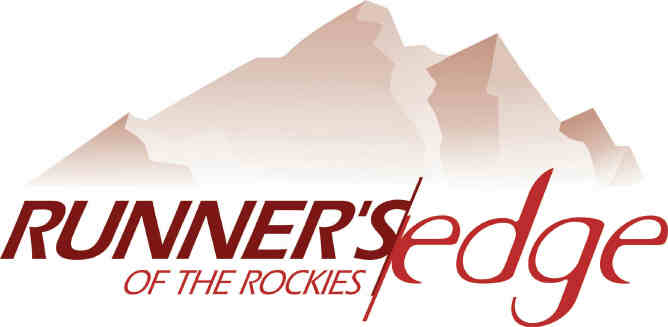
- SmartPacing
- Choosing a pace team
- Pace Prediction
- Pace Bands
In this section:
Our Upcoming Races
Eisenhower Marathon/Half - 04/19/2025
DoNot Stop Half - 04/19/2025
Garmin Marathon - 04/26/2025
Trolley Run - 04/27/2025
Lincoln Marathon - 05/04/2025
Running with the Cows Half - 05/10/2025
Colfax Marathon - 05/18/2025
Greater Kansas City Midwest Half Marathon - 05/18/2025
Bill Snyder Highway Half - 05/24/2025
Hospital Hill Run - 05/31/2025
Clinton Historic Half - 06/14/2025
Hometown Half Marathon - 06/14/2025
Four on the 4th - 07/04/2025
Valentine Marathon/Half - 08/02/2025
Words to run by
"Insanity is doing the same thing over and over again and expecting different results" Albert Einstein
Pacing Strategy
Hold back, settle into a strong rhythm, and hang in there
An even pace runs about the same pace at the beginning as in the middle and the end. Our proven "SmartPace" strategy runs a difference pace at different stages in the race. The beginning is our warm-up (everyone says not to go out too fast, and then everyone does it -- not us!). The middle is the steady work setting you up for the real job at the end, where some just need to hold on, and others can finish strong. Our strategy also plans for the course elevation - slower on the ups and faster on the downs.
Use our SmartPace Pace Calculator to see the actual mile-by-mile splits we will plan to hit based on our pacing strategy.
Hold back
We run the first two miles slower than goal pace. For the full marathon, we'll take about an extra minute for the first mile, and about 30 seconds for the half marathoners. This slower pace will let your body warm-up and start using energy efficiently. The second mile will be about 30 seconds slow for the full, and about 15 seconds slower for the half to continue the shift from warm up to settling in. Finally, we’ll run the 3rd mile at the average pace effort of your goal time to complete the transition.
Why warm up?
The body needs to warm up for at least 2 miles.
During the warm-up, the body goes from inefficient fuel burning (converting oxygen, sugar/fat, electrolytes to energy) and waste removal (getting rid of lactic acid and built up heat) machine to a more efficient one. If you push too hard (even doing even pace), they risk using an inordinate amount of stored glycogen while accumulating an inordinate amount of lactic acid & hydrogen ions - a recipe for fatigue and ‘heavy legs’ for the final few miles of the race.
It’s tough to start conservatively, especially when everyone around you is flying by and you have so much nervous energy and are amp'd up on adrenaline. Conserve that energy because no matter how great of a race you are having, everything will start to hurt during those last few miles. And all that energy you saved early on will come in handy. It’s the difference between hitting the wall and just being uncomfortable during the last few miles. We’ve hit the wall too many times to mention and, believe us, being uncomfortable is way better.
Settle into a strong, but doable rhythm
Once our engines are running smoothly, we will pick up the pace and settle into a strong pace. We'll vary from about 5 to 10 seconds faster per mile through the middle of the race to make up the time from our warm-up and to build a little cushion in the full marathon for the end. We will also vary the pace to account for the terrain - 5-10 seconds faster or slower depending on the hills.
Hang in there
Near the end, we'll ease up on our strong middle pace. For the full, we will gradually slow back to the average goal pace, and then allow for some slowing in the last few miles. In the half, our last few miles will be at average goal pace. Here is where the Pace Teams will give lots of encouragement. You can focus on swinging your arms & repeating your goals to yourself. Relax your shoulders. Imagine a laser focus that is drawing you to the finish line, or a magnet on those in front, pulling you towards them.
77% of our runners think our SmartPacing helped them finish strong.
Finish Strong
If you feel strong in the last 2 or 3 miles, leave your Pace Team in the dust and dig deep. Our goal is to have runners pass us at the end. We have set you up with all the tools to finish strong and we are thrilled to see you finish in front of us and your goal time. Take full advantage of the crowd support & your adrenaline on the final stretch! This is your victory lap!
The pacers were wonderful. I didn't start with that group or end with that group, but caught them at about mile 3 and stuck with them through about mile 9. They explained the strategy right when I joined the group (different paces for different parts of the race, walk through aid stations, etc) and took turns between the two of them with one setting the pace and the other sort of making sure the group was motivated and keeping up.
I especially appreciate how they helped me to NOT go out too fast which gave me enough energy at the end to leave them and finish strong, beating my previous PR.
Why pace based on the course elevation?
Most runners do slow their pace on hills. Our SmartPacing takes that into account & then we gain back time by speeding up on the flats & the downhills. Really tune into trying to maintain the same breathing rate you had on flat terrain as you climb a hill & keep slowing down as needed. You'll find that you'll have a lot more left for the downhill and will make up much more time that way. It's much more efficient, and you'll end up conquering the entire hill (up & down) more quickly. You'll spend the downhill taking advantage of gravity instead of trying to catch your breath.
You can purchase a course-speciific pace band from Races2Remember.com, who will be providing pace bands for our SmartPacers to follow.

The Garmin SmartPacing Team
fueled by Picky Bars

Real [Good] Food. Built To Fuel.
Create a free Chase Chart to help friends and family find you on the course based on your finish time.
after you race, please come back and leave comments about your pacer, and complete a survey to help us improve.
SmartPacing is organized by The Runners's Edge in Kansas City and The Runners's Edge of the Rockies in Denver, with support from
Races2Remember.com.

